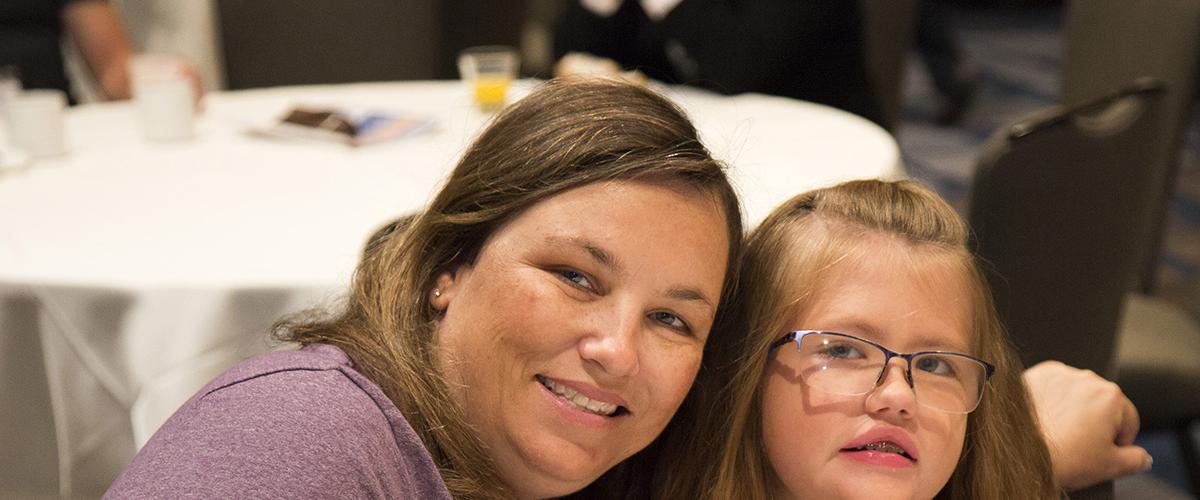When cardiologist Dr. William J. Groh examined a young woman with an arrhythmia in 1995, he thought it was unusual. She did not have known heart disease or heart failure that would normally be associated with a serious heart rhythm disturbance. What she did have, though, was myotonic dystrophy (DM).
The case sent Dr. Groh searching through the available medical literature. At the time, it was not established that such heart complications were common among myotonic dystrophy patients. He found papers discussing the issue, but there were no large studies that sought to answer fundamental questions about cardiac involvement in myotonic dystrophy.
Dr. Groh, who was then a fellow at Oregon Health & Science University in Portland, OR, decided to undertake a large natural history study of myotonic dystrophy type 1 patients. The goal was to determine in the general myotonic dystrophy population what the risk of heart problems was, whether there were predictors of such problems that could identify patients at greater risk, and what could be done prevent some of the adverse outcomes.
When the 11th meeting of the International Myotonic Dystrophy Consortium (IDMC-11) convened in San Francisco September 5–9, 2017, Dr. Groh was one of the researchers who presented.
“It was an excellent meeting,” Dr. Groh said. “It brought together a world-class group of leaders in the research and care of myotonic dystrophy. Every disease should have this type of support. Researchers, clinicians, patients, and advocacy groups all get together in one meeting, so it’s very important.”
Among the issues of greatest concerns for Dr. Groh are the need for additional research to identify the best strategies for addressing myotonic dystrophy type 1 (DM1) patients at risk for sudden death from arrhythmias, and the need for employing interdisciplinary teams to address the complexities of health issues DM patients face.
Study Launched
In April 1997, after moving to Indiana University, Dr. Groh began work on a major natural history study of DM1 patients. At that time, he believed that efforts to determine how to identify DM1 patients who were at high risk for sudden death were stymied because the populations for previous studies were too small and not adequately representative of the broad DM1 population. As a result, he said it left unclear the best way to diagnose and treat DM1 patients at greatest risk of sudden death.
The study, which enrolled 406 patients at 23 neuromuscular disease clinics in the United States, was the first such study to use genetic testing to confirm that all of the participants had DM1. It showed that some adult patients with the disease were at high risk for sudden death. It also found that severe electrocardiographic (EKG) abnormality and a clinical diagnosis of a sustained atrial arrhythmia were independent predictors of sudden death.
“We showed that we could use a simple EKG to help determine who was at high risk for heart problems in myotonic dystrophy,” he said. “Our work allowed us to take a general myotonic dystrophy population and screen people.”
He said if a younger person with myotonic dystrophy came in and had a normal electrocardiogram and no other heart findings on examination, the chances that they would have a problem relating to their heart in the next five years would be low. However, if they had significant abnormalities on their electrocardiogram, it was a cause for concern.
Differing Opinions
French researchers, he said, had been doing excellent work in parallel with his study. However, their work supported a greater use of prophylactic pacemakers in patients before serious heart problems are manifest. Dr. Groh’s work also showed the value of pacemakers but questioned whether the risk of sudden death was still excessive despite the presence of a pacemaker.
In fact, Dr. Groh has raised the issue of whether an implantable cardioverter-defibrillator (ICD) that can act as a pacemaker as well as treat rapid ventricular arrhythmias would be a better way to protect patients. In a paper published in June 2008, his work suggested that patients might benefit from an ICD.
Nevertheless, Dr. Groh cautions that his study was observational and that the French studies carefully examined a high-risk population that received pacemakers and showed benefit. He believes the question of whether the use of a pacemaker or ICD would allow patients to live longer and live a better life remains unresolved. “That’s another study that needs to be done,” he said.
“I think the next important trial in the United States would look at a high-risk population of myotonic dystrophy patients and treat them with an ICD and look at outcomes,” he said. “What we have found so far is that many U.S. doctors are putting pacemakers and ICDs in patients with myotonic dystrophy and we’d like to show, in fact, exactly which patients can benefit from this.”
A Team Approach
Dr. Groh’s interest in arrhythmias comes naturally. As an undergraduate student at Marquette University, he majored in electrical engineering. Today, as a cardiologist, a cardiac electrophysiologist, a professor at the Medical University of South Carolina, and the chief of medicine at the affiliated Veterans Affairs Medical Center, he focuses broadly on patients with heart rhythm disturbances, not just patients with DM.
He said that many cardiologists do not understand heart involvement in myotonic dystrophy. They may see just one or two myotonic patients and may not recognize the relevant issues. Dr. Groh said he’s always happy to get on his “soapbox” to preach about the need for a team of specialists to care for myotonic dystrophy patients.
“Because so many systems are affected by myotonic dystrophy, when you are approaching these individuals you have to deliver multidisciplinary care,” he said. “The team should include a neurologist, a physical therapist, a pulmonologist because of lung involvement, and a cardiologist. Over the last decade, we’ve seen more of these multidisciplinary clinics set up and this is important for delivery quality care to DM families.”

